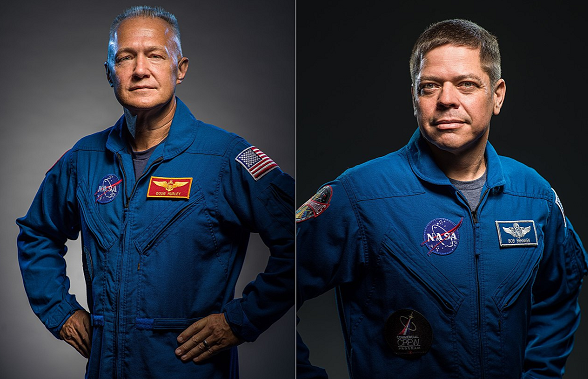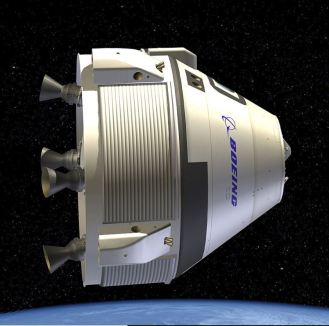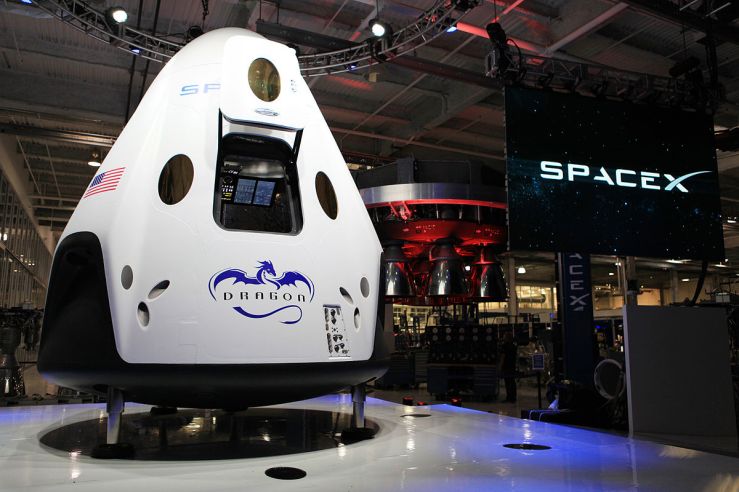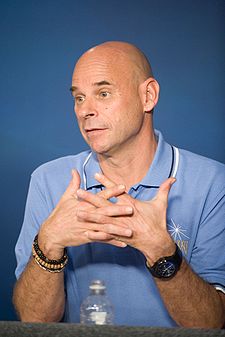Since the retirement of the Space Shuttle in July 2011, America has been unable to put any astronauts into orbit around the Earth. Instead, it has been in the difficult situation of having to rely on the Russian Soyuz spacecraft to ferry astronauts to and from the International Space Station (ISS). This situation may change in 2019; later this year there are two missions tentatively planned to take astronauts to the ISS on American spacecraft.
NASA astronauts Doug Hurley and Bob Behnken who in June 2019 are planned to become the first astronauts since July 2011 to go into orbit on a American spacecraft – image from NASA.
Interestingly, as a result of a change in space policy by the Obama administration nine years ago, and continued under Donald Trump, both these missions will be in spacecraft designed and built by private companies, rather than NASA.
The Boeing CT-100 Starliner Space Capsule – image from NASA. In 2019 this spacecraft may take astronauts to and from the ISS.
In a speech in 2010, US President Obama announced a major shift in the function of NASA in American human space flight:
‘By buying the services of space transportation — rather than the vehicles themselves — we can continue to ensure rigorous safety standards are met. But we will also accelerate the pace of innovations as companies — from young startups to established leaders — compete to design and build and launch new means of carrying people and materials out of our atmosphere. ….
Some have said, for instance, that this plan gives up our leadership in space by failing to produce plans within NASA to reach low Earth orbit, …. But we will actually reach space faster and more often under this new plan, in ways that will help us improve our technological capacity and lower our costs, which are both essential for the long-term sustainability of space flight.’
(White House press release 2010)
So, rather than build its own spacecraft to replace the Space Shuttle, NASA awarded grants to private companies to support research and development into human space flight. The program had a number of phases. In the first phase five companies were awarded grants to partially fund the research and development of the key technologies and capabilities that could ultimately be used in human space transportation systems. In the next phases, NASA awarded further grants to four companies to develop spacecraft that could send to astronauts to the ISS after the Space Shuttle’s retirement.
After another selection process, in 2014 NASA made the final decision that the winners of the contracts for up to six crewed flights to transport astronauts to and from the ISS were as follows:
- Boeing – They were given a contract worth up to $4.2 billion, to transport astronauts on their CT-100 Starliner spacecraft.
- Space X – A company set up by Elon Musk, the co-founder of Paypal. They were given a contract worth up to $2.6 billion to transport astronauts on their Dragon 2 – pictured below.
For more details see NASA (2014).
The Dragon 2 Spacecraft – image from NASA
When the final decision was made it was anticipated that the winning companies would be able to launch manned missions to the ISS by 2017. However, there have been numerous delays in the development of both spacecraft and the launch dates have slipped.
According to the current launch schedule (https://www.nasa.gov/launchschedule/ ), the target dates for unmanned test flights of the spacecraft are 23 February 2019 for the Dragon 2 and an unspecified date in March 2019 for the CT100. If there are no further delays and these test flights do take place and are successful, then in June 2019 the Dragon 2 spacecraft with Doug Hurley and Bob Behnken aboard will be the first American spacecraft to carry astronauts into orbit since the retirement of the Space Shuttle. This will be followed by the CT100 two months later.
New opportunities for space tourism
The contract terms are that both companies will charge NASA around $60 million for each astronaut on a flight to the ISS. This is slightly cheaper than the amount it pays to the Russian space agency. The real boost is that rather than the money going to the Russian space agency, it will go to American companies, boosting American high technology industries and creating American jobs.
Once they have fulfilled their contractual commitments to NASA, both companies are free to sell additional spare capacity to space tourists willing to spend around $60 million dollars for a flight into orbit. Even at this extremely high price tag there would a high demand among the super rich. In fact, between 2001 and 2009 seven individuals paid up to $40 million for a trip into orbit on a Soyuz rocket. After 2009 space was tourism was halted , as the Russians had no spare capacity for this type of flight.
The French Canadian Guy Laliberte, founder of Cirque du Soleil, who paid $40 million for a 11 day trip into space in 2009. Image from NASA.
Footnote – the Orion spacecraft
Even though NASA is now commissioning private companies to transport astronauts into low Earth orbit, it has not abandoned developing its own manned spacecraft altogether. It is currently developing the Orion spacecraft and a new launcher called the Space Launch System. In around 2023 to 2025 the spacecraft is expected to take its first crew into orbit around the Earth, and it will have the capability take a crew of up to four beyond low Earth orbit, perhaps on a mission around the Moon or to a nearby asteroid.
I hope you have enjoyed this post. To find out more about the Science Geek’s blog, click here or at the Science Geek Home link at the top of this page.
References
NASA (2014) NASA chooses American companies to transport U.S. astronauts to International Space Station, Available at: https://www.nasa.gov/press/2014/september/nasa-chooses-american-companies-to-transport-us-astronauts-to-international (Accessed: 1 February 2019).
The White House (2010) Remarks by the president on space exploration in the 21st century, Available at: https://www.nasa.gov/news/media/trans/obama_ksc_trans.html(Accessed: 1 February 2019).






[…] This post has been superseded by the later post American spaceflight in 2019 […]
LikeLike
Makes me wonder if we’ll eventually have a 3-tier system … planes that can reach the edge of gravity, (can’t remember the exact details but a plane did it not that long ago) … a shuttle that will take a passenger pod from the plane to the nearest space station, and is based at the station, not on Earth … and another shuttle that transfer’s people from the station to their habitat/colony/O’Neil cylinder of choice. (this might decrease the energy required to get out of our gravity well) … hmm … actually I think that just answered a question I was stuck on in a story I’m writing. 😀
LikeLiked by 1 person
An interesting scenario !
LikeLiked by 1 person
That’s the thing with writing SF … you never know when the brain cells twig onto an idea. 😀
LikeLike
Perhaps this is what fits your requirement: https://en.wikipedia.org/wiki/SABRE_(rocket_engine)
LikeLiked by 1 person
Brilliant!!! … thanks for that. 😀
LikeLiked by 1 person
Yes it does to me as well. The costs in $ per minute in space are certainly a lot lot lower!
However it is still a little out of my budget 🙂
LikeLiked by 2 people
Heh, mine too. 😀
LikeLiked by 1 person
$40 million for a 11 day trip into space sounds like better value for money than Virgin’s $250,000 for 6 minutes of weightlessness.
LikeLiked by 1 person
[…] Source link […]
LikeLike
[…] Source link […]
LikeLike